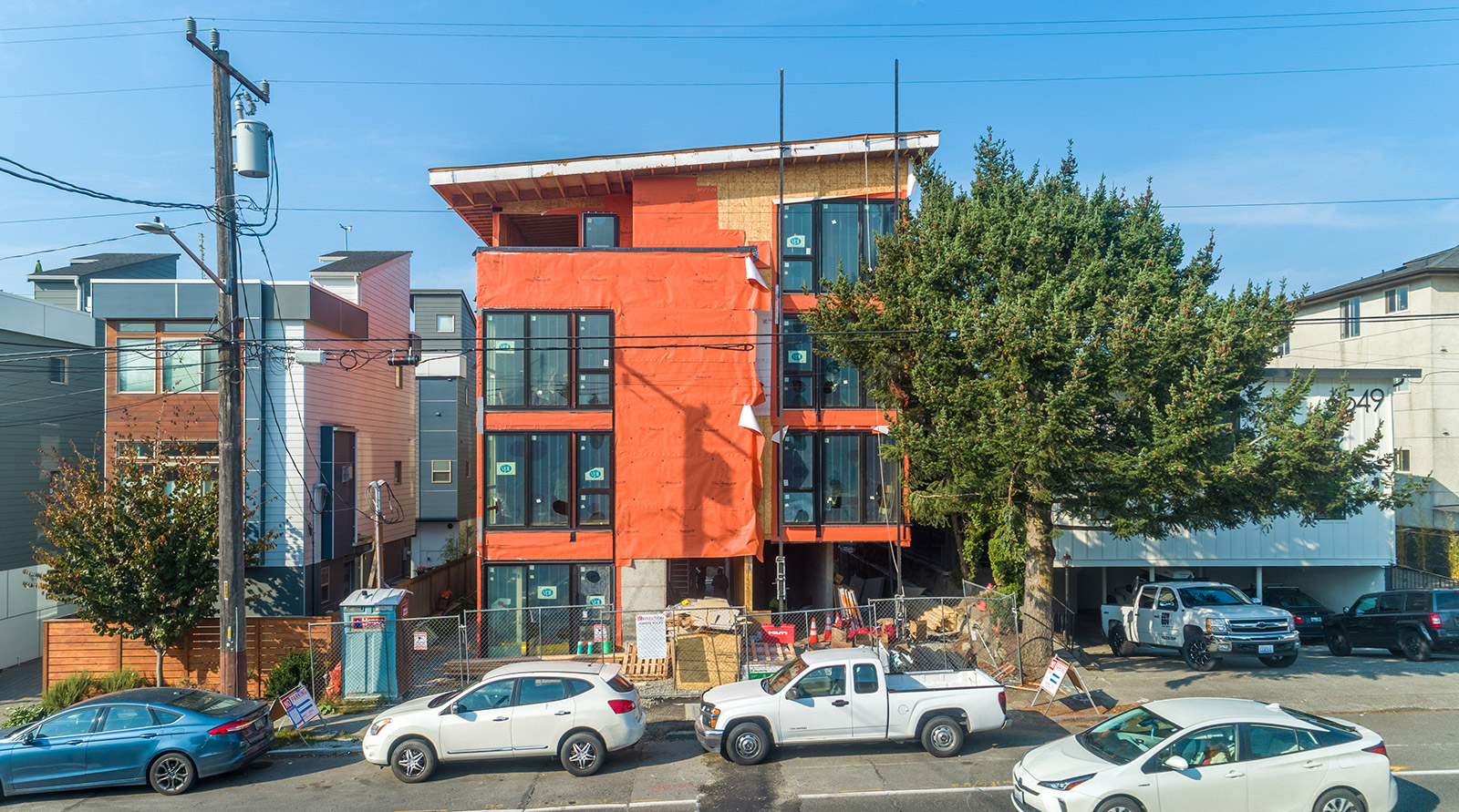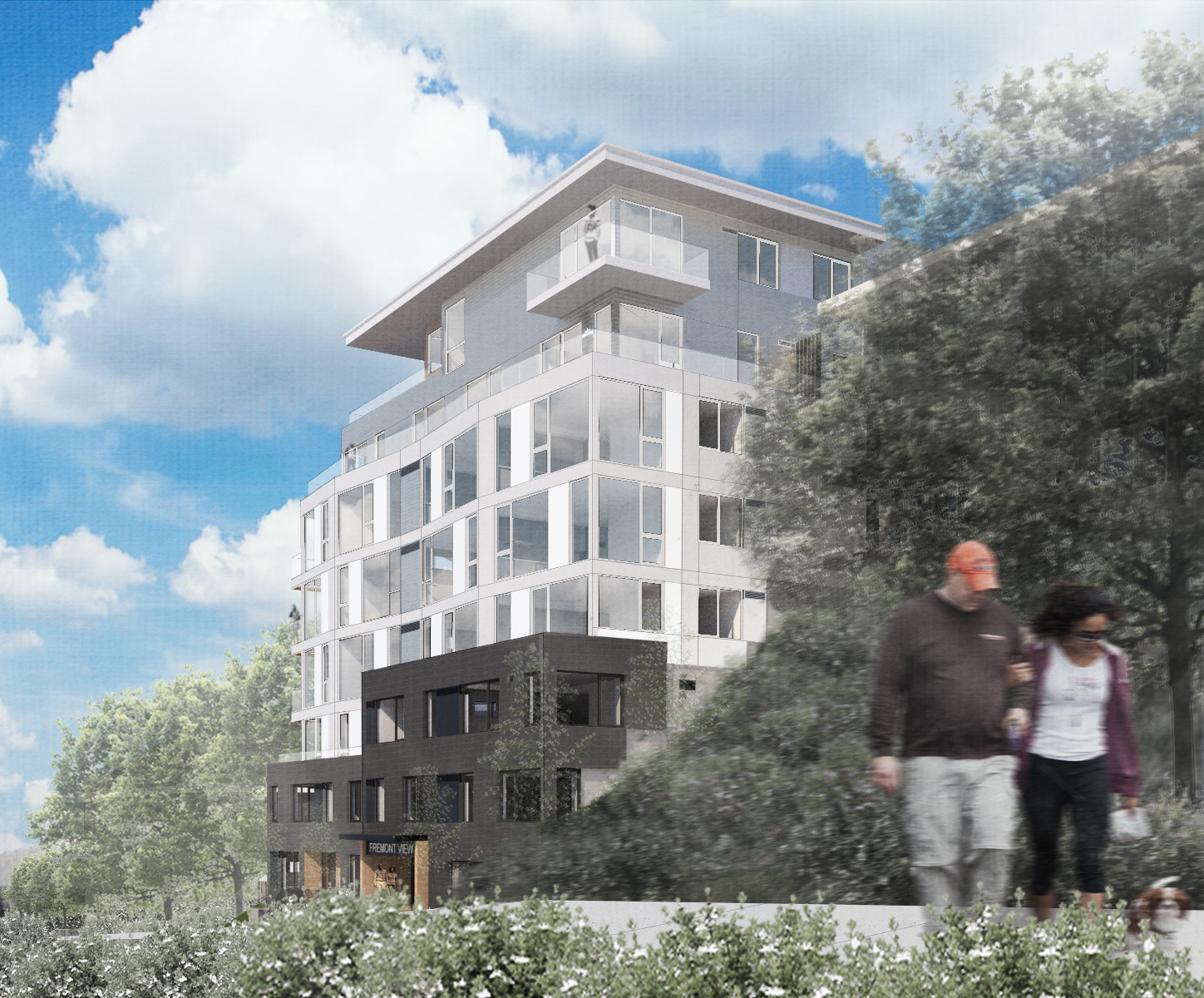
[All photos by BUILD LLC]
Not long ago, a significant threshold was crossed in many American cities. It occurred as a result of the confluence of soaring construction costs, overreaching permitting requirements, obstinate utility companies, and neighborhoods opposed to density. It’s been the perfect storm to create an alarming polarity within the built environment. On the one side, the shear friction of these factors alone can too easily guarantee that something detrimental happens to the built environment—nothing. In other words: a stalemate of development, the domino effect of which leads to the deceleration of a city’s evolution, and a reversal of social equity. This deadlock can easily perpetuate an urban landscape comprised of nothing but exclusive, single-family residences for generations. Along with the one-house-per-lot mentality comes a host of undesirable byproducts, including but not limited to an alarming amount of wasted space, rising utility fees, and a staggering cost of entry that many will never be able to attain.
At the other side of the spectrum are the mega-box apartment buildings tightly wedged between their nondescript sidewalks. These developments engulf entire city blocks, extend up to six or seven stories, and include hundreds of apartment units under one roof. We’d like to call these developments thoughtless, but that couldn’t be less true. Due to the challenging factors noted above, a tremendous amount of thought is required to simply clear the logistical hurdles and realize these projects. So much thought, in fact, that there’s rarely anything left over to properly respond to the context, refine the design, and add the poetics and nuance imperative of good architecture. So, while the metrics of these buildings seem extreme, it is precisely this magnitude of math necessary to make a project pencil-out financially. Unprecedented construction costs are offset by including more rentable apartments, and with permitting being as protracted, difficult, and expense as it is, developers are forced to get as much square footage as possible out of the process. And as for the NIMBY neighbors? If the project involves clearing out entire city blocks for the new development, there are far fewer community members left to raise concern.

All this to say that in order to responsibly realize small to medium size developments, a tremendous amount of stewardship, vision, and courage are required of the investor and developer teams. It is these smaller, more granular projects that are the essential building blocks of healthy, vibrant cities. These buildings are typically 2-4 stories tall, include anywhere between 10-30 units, and only occupy a corner or slice of a city block. A building of this scale may only require one or two single-family lots, and the displacement is minimal or none at all, as many of the previous structures are dilapidated and abandoned. At this scale of housing, owners and renters know their neighbors, and the community retains its character. Smaller scale projects like this help create the density necessary to support a local café, restaurant, or corner market without scraping away the brick and mortar, mom-‘n’-pop shops that took generations to cultivate in these neighborhoods.
In the spirit of smaller scale, multi-family buildings, there are four projects currently on our desks at BUILD that are worth taking a closer look at. Special commendation goes out to the owners, investors, and developers behind these projects for their perseverance, integrity, and care. Their belief in good design is fostering affordability in the city, while adding important building blocks to the urban fabric.
BALLARD FLATS
Purposefully designed to avoid crossing the threshold of Seattle’s expensive, time-consuming, and onerous design review process, the project keeps the total built area tidy while including nine one-bedroom units, one two-bedroom unit, and two studio units. The building’s design breaks the massing into two equal halves to better navigate the sloping site and provide twelve dwellings, each with 180 degrees of natural light. Neatly tucked underneath the building is space for six vehicles—all electric ready. The savvy developers at locally owned RCP 6547 LLC have created a building and a proforma nimble enough to get through the permitting process effectively, while raising the bar of good design in Seattle’s Ballard neighborhood. The project is currently being constructed by Revolution Custom Builders.


FREEVILLE
Cleverly engineered to fit like a puzzle piece into a steep slope hillside, the building includes 29 apartment units and provides affordable housing to meet the City of Seattle’s MHA program. Three additional units are also being added to an existing adjacent building. The project turns unused urban space into desperately needed housing, all within walking distance to Fremont’s urban hub (known to locals as the center of the universe). The project is being developed by the locally owned Cliffside LLC and the project carefully fits into a campus of existing and well-established multi-family buildings of the same owner. Constructing the project is the capable and resourceful Stringham Custom Homes.


1010 BURWELL
The recently completed apartment building in Bremerton, Washington includes 25 apartment units within walking distance of downtown Bremerton and the ferry to Seattle. It’s an important urban renewal project that adds to the walkability of an urban hub, while providing workforce housing adjacent to the Naval shipyard. Responsible for the development is Lorax Partners LLC, who have been nurturing Bremerton for decades with a number of urban-minded projects and public spaces.


KING STREET FLATS
Divided into two separate buildings, the 30-unit project relates to the scale and nature of its diverse surroundings. The 15-unit building on the north side of the property uses darker, streamlined materials to associate with its industrial neighbors along Seattle’s S. Jackson Place, and the 15-unit south building incorporates lighter tones and cedar textures to meet its single-family neighbors along S. King St. The developer, locally owned AJP Properties, persevered through daunting challenges including an unreasonable design review process and uncooperative utility companies. The finished product is soon to be completed by Corstone and will be a an excellent example of integrated, urban multi-family dwellings.


Modest scale buildings such as these fit like Tetris pieces into the city. Multiply their occurrences by a variety of local developers and a mix of smaller architecture practices, apply them over the course of decades, and the result is vibrant cities that foster diversity, evolution, and inclusion. We can’t sing enough praise for the developers and investors willing to take the risks required of this project scale, trust the vision, and realize them. It may not be evident just yet, as communities continue to focus on outdated agendas about limiting density and protecting the almighty parking stall, but smaller-scale projects are a critical ingredient to great cities. These four are just a few. There are many more good examples out there that require the support of building departments, city councils, and communities.
Cheers from team BUILD





